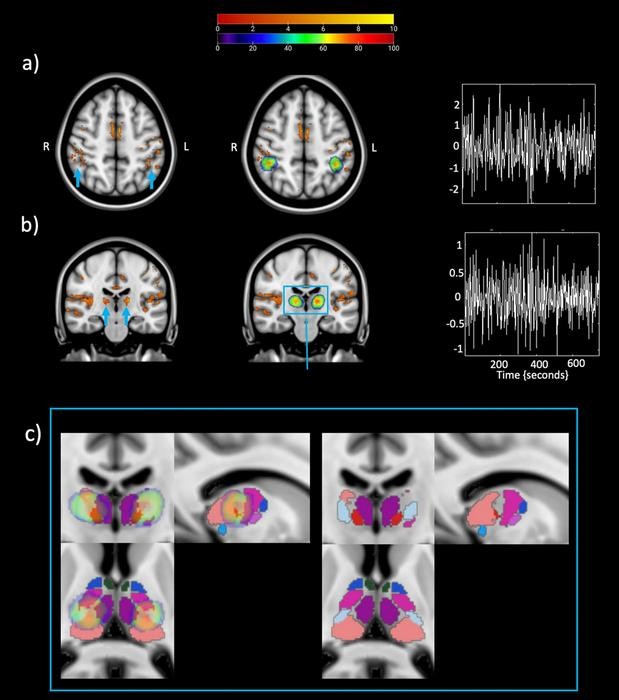7T MRI Provides Insight Into How Light Stimulates the Brain
Images

Researchers from the University of Liège used 7T MRI to better understand how light stimulates the human brain and their work provide new insights into how it works.
The team at the ULiège GIGA Institute tried to understand better how light stimulates cognition. Light can act like a cup of coffee and helps keep people awake, which is why it is recommended to not use too much light on smartphones and tablets in the evening. This can disrupt our sleep. On the other hand, the same light can help during the day.
Many studies have shown that good lighting can help students in schools, hospital staff and patients, and company employees. It's the blue part of the light that's most effective for this, as blue light detectors in the eyes tell the brain about the quality and quantity of light around us.
The brain regions responsible for this stimulating impact of light (also known as the 'non-visual' impact of light) are not well understood. "They are small and located in the subcortical part of the brain," explains Ilenia Paparella, doctoral student in the GIGA CRC IVI laboratory and first author of the article published in Communications Biology. The team of researchers from the GIGA-CRC-IVI was able to take advantage of the higher resolution of 7T MRI to show that the thalamus, a subcortical region located just below the corpus callosum (that connects the brain’s two hemispheres), plays a role in relaying non-visual light information to the parietal cortex in an area known to control attention levels. "We knew of its important role in vision, but its role in non-visual aspects was not yet certain. With this study, we have demonstrated that the thalamus stimulates the parietal regions and not the other way around, as we might have thought," Paparella adds.
These new advances in the knowledge of the role of the thalamus may identify lighting solutions that will help cognition during the hours when people are fully awake and focused, or that will contribute to better sleep through relaxing light.
Related Articles
Citation
7T MRI Provides Insight Into How Light Stimulates the Brain. Appl Radiol.
September 26, 2023